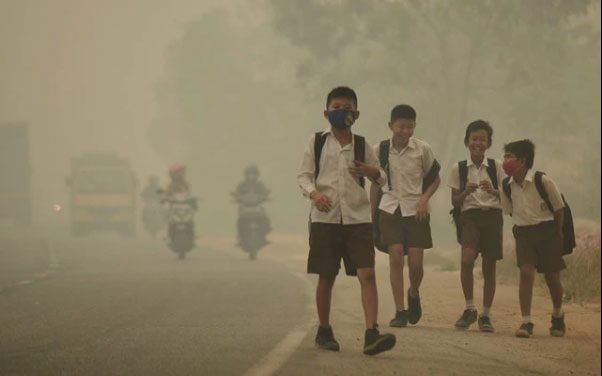Unusual and harsh weather conditions increase environmental pollution levels, creating an ideal environment for bacteria to thrive and raising the risk of diseases, especially for those with weaker immune systems such as children, pregnant women, the elderly, and the sick.
Rain and Fog: Common Culprits of Illness
Rainy weather or foggy conditions are not favorable for human health. They share common characteristics of high humidity and low temperatures. These conditions can negatively impact the body due to prolonged exposure.

Rainy weather creates conditions for parasites and bacteria to thrive…
Rainy weather and high humidity create an environment prone to flooding, which fosters the proliferation and activity of parasites and bacteria. Moreover, pollution is also one of the reasons why rainwater can contain pathogens. If one comes into contact with contaminated rainwater, it can easily lead to skin and respiratory diseases.
Fog not only obstructs visibility but also serves as a perfect hiding place for bacteria and viruses. The presence of fog limits atmospheric circulation, preventing pollutants from dispersing upwards to dilute and dissipate, thus trapping them in the lower atmosphere and increasing air pollution.
Although not visible, the potential for dust, smoke, harmful substances, and even bacteria and viruses to linger in fog is quite high. When inhaling fog, the pathogens within can easily enter the body. Those who are sensitive or have weaker immunity, such as young children, pregnant women, and the elderly, are more susceptible to health issues. The symptoms of illness can be quite varied, with respiratory-related diseases being the most common, including pneumonia and allergic respiratory diseases.
Young children are particularly vulnerable to adverse weather conditions such as rain or fog. Not only do they have underdeveloped immune systems, but many young children are also unaware of how to best protect themselves, resulting in higher exposure to rainwater or fog compared to adults. Consequently, the risk of viral and bacterial infections is greater.

Young children are particularly affected by adverse weather such as rain or fog.
Protecting Health During Unpredictable Weather, Especially in Rainy or Foggy Seasons
The disease-causing agents that “hide” in rainwater and fog are not visible, so the best health protection strategy is to avoid contact with them and minimize harm when avoidance is not possible.
To avoid exposure to rainwater, fog, and polluted air, people should limit outdoor activities during heavy rain or dense fog. If going outside during rain, it’s essential to be well-protected with a raincoat. When venturing out in foggy weather, wearing long-sleeved clothing and using glasses and masks is advisable.
Strengthening the body’s immunity from within is crucial. Good immunity helps the body fend off environmental pathogens.
To boost immunity from the inside, it is important to consume a balanced diet. One should ensure a balance between animal-based nutrients (meat, fish, eggs, shrimp, crab, etc.) and plant-based foods (vegetables, grains, fruits) daily.




















































